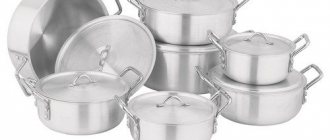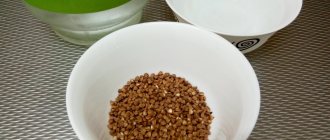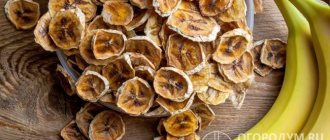The boom in healthy eating and a conscious approach to food choice is associated not only with fashion and popular trends, but with people’s desire to maintain and increase their health. Classic diets quickly tire you out and do not give you strength, but a reasonable approach to your diet, combined with the proper introduction of healthy, tasty foods into it, helps you get excellent results.
A striking example of such a rethinking of the food set can be the use of sprouted green buckwheat. Contrary to popular belief it is not difficult to germinate this cereal , and the resulting product pleases with both an excellent set of vitamins and microelements and a pleasant taste.
The benefits of sprouted buckwheat
Nutritionists advise including buckwheat sprouts in your diet if you are overweight: they contain carbohydrates and proteins that are easily absorbed by the body, and also regulate cholesterol levels in the blood. Regular consumption of sprouts can improve health by removing toxins and processed products.
Buckwheat is rich in essential amino acids, including:
- leucine;
- tryptophan;
- valine;
- histidine
These acids are not produced in the human body, but are responsible for protein synthesis. They are the basis of the body and are part of all body tissues and DNA. Buckwheat shoots are also rich in phospholipids: substances necessary for normal cell function. They have an anti-sclerotic effect, because... remove cholesterol from the blood. Contains sprouted buckwheat and Omega-3 polyunsaturated acid, which is important for health. It is indispensable in the prevention of cardiovascular diseases.
The sprouts also contain important organic acids such as linolenic, maleic and oxalic. They are responsible for the functioning of the gastrointestinal tract and the condition of the digestive system. Even young buckwheat contains many vitamins B and E, which are necessary for the nervous system, metabolic processes and hemoglobin synthesis.
Of the micro- and macroelements, the shoots contain a lot of sodium, phosphorus, silicon, iodine, fluorine, sulfur, magnesium, iron, manganese, etc. All these substances are involved in normalizing the acid-base balance, preventing diseases of the cardiovascular system, diabetes, atherosclerosis, etc.
Helpful information
The usual buckwheat lying on store shelves is brownish in color. The shade depends on the degree of heat treatment. Scientists have conducted research and proven that when processed, buckwheat loses most of its beneficial vitamins. Green buckwheat is a grain that has not been processed at high temperatures, which means it has retained all its healing properties.
Unsteamed (raw) buckwheat is most beneficial for the human body. It is also sometimes called “live” cereal.
Green buckwheat, the properties of which are probably known to many, is useful only when sprouted or steamed. If you cook it like regular buckwheat, then all the beneficial properties will disappear and there will be no point in consuming this particular cereal.
Steaming the cereal will not be difficult. To do this, pour a glass of buckwheat into two glasses of boiling water, close the lid, wrap it up and leave it like that overnight. In the morning, the healthy dish will be ready. You can also cook buckwheat with kefir. All that remains is to add a little nuts, honey or milk, depending on your taste preferences.
Despite the fact that steamed cereals contain a lot of vitamins, sprouted buckwheat is more healthy. However, you should know how to sprout green buckwheat to achieve the best results.
How to germinate buckwheat at home
Sprouting buckwheat at home begins with choosing grain. An ordinary kernel is unsuitable for these purposes, because has undergone heat treatment and is not able to sprout. Buckwheat seeds must be from the latest harvest and of high quality. This means that they were collected in an ecologically clean area and were not subjected to chemical treatment against fungi and other diseases. It is easiest to germinate seeds in spring and autumn, since at this time of year their germination is maximum and temperature conditions are close to ideal.
Good seeds should be whole and have an even color. The presence of inclusions or chips indicates low quality of the material. You can buy buckwheat for germination both at the market and in the store. If the cereal meets the basic requirements, the place of purchase does not matter.
Sprouting correctly: important points
To sprout the perfect buckwheat for eating, it is important to follow the recommendations of healthy eating experts. After all, only a properly sprouted product will really bring benefits. In addition to carefully selecting grains and water for the procedure, it is important to choose the right dishes. Since there are no special containers for sprouting cereals in our stores, you can use a colander, a glass, porcelain or ceramic bowl, or a pan with a transparent lid. The dishes should be clean and convenient.
Grain selection
Green buckwheat appeared on the shelves of domestic stores not so long ago, but the range of this product is becoming wider every year, although finding a high-quality and truly safe product is not so easy.
When choosing green grain, pay attention to the packaging date, expiration date of the product, and the reputation of the manufacturer . The ideal option for germination is considered to be cereals collected and packaged in the same year - this way the grains retain the maximum amount of strength for growth.
IMPORTANT! Fresh cereals should not smell damp or musty; it should not contain foreign impurities or dirt.
Do you want a high quality product? Pay attention to buckwheat labeled “bio” or a special “cereal for sprouting” . It is easier to find such a product in small nutrition stores, as well as establishments aimed at vegetarian customers. But in markets and gardening shops it is better not to buy the product, because with a high degree of probability they offer a product treated with chemical compounds that is ready for growing, not sprouting.
Water for germination
For grain, it is water that becomes the source of strength, so the quality of sprouted buckwheat depends on the chosen water. Ordinary tap water , generously flavored with chlorine and other cleaning agents, is unlikely to help grains germinate quickly and effectively.
Boiled water is also classified as an undesirable environment for the germination procedure of any grain, since there is not even oxygen in the liquid that has undergone such active heat treatment.
Among the most preferred options is spring water . But even in this case you need to be sure of its purity. Melt and glacial water are even more preferable environments for grain germination. It is not difficult to obtain: freeze enough high-quality bottled water in the refrigerator, and then use it to obtain sprouted buckwheat.
Preparatory work
Before planting seeds, you need to choose the right container. Plastic plates and bowls are not suitable: the material does not allow air to pass through and can cause the seeds to sour. It is better to use a container made of porcelain, glass or ceramics. You also need to choose a shallow and wide bowl for washing and soaking the grain. Before planting, the seeds are washed several times - the water should remain clean. For soaking, it is better to prepare spring or clean filtered water, but not boiled water. You will also need a small piece of gauze fabric.
Harm and contraindications
No matter how many useful qualities this product has, it is important to remember some of its contraindications. Thus, green buckwheat grains should not be used if there is increased blood clotting or serious pathologies of the digestive system, such as gastritis, ulcers. In addition, in some cases, individual intolerance to sprouted buckwheat kernels may occur.
Excessive consumption of this dish can cause discomfort in the intestines due to high gas formation.
Germination technology
The germination process begins with determining the portion of cereal. The short shelf life of sprouts does not allow you to sprout green buckwheat in large quantities at once, but you can select a portion with a reserve of a couple of days. How much depends on individual preferences. Even if the seeds look clean, they need to be washed several times in running water. You can also soak them for a few hours and remove any floating grains.
Then the washed seeds are placed in a container for germination and filled with clean water in a ratio of 1 to 3. It will take 3-4 hours for the grains to swell. During this time, they will double in size, and if mucus appears around the seeds, you just need to rinse them again under running water. It is not advisable to leave seeds in water for a longer period of time.
After the first swelling, the buckwheat needs to be washed again and then spread in a thin layer over the surface of the container. The top of the cereal is covered with gauze. Cover the container loosely with a lid and place in a warm place for 24 hours. Every 10-11 hours, the cereal should be carefully washed. It is not advisable to place a container with buckwheat seeds in direct sunlight or near heating devices.
Usually the first shoots appear after 24-30 hours (this depends on the quality of the cereal and water). They reach 2-3 mm in length and are already edible. For cooking and storage, it is better to use sprouts no longer than 5-6 mm. Longer shoots lose some of their nutritional qualities and become difficult to digest.
To germinate green buckwheat at home, it is prohibited to use any other methods. In the ground, the seeds will also sprout quickly and vigorously, but the shoots will be unsuitable for food. The soil contains many bacteria that will settle and begin to actively multiply on the seedlings, which will make buckwheat sprouts hazardous to health.
Benefits of green buckwheat for sprouting.
Why green buckwheat? There are many reasons, I will list them in order of importance to me:
- Of all the grains that I have tried to germinate, green buckwheat seems to me the most delicious ! And I tried a lot of things: oats, rye, wheat, spelt, chickpeas, mung beans, peas. So, I am not a fan of forcing myself to eat foods because they are healthy and despite the fact that they do not seem tasty to me. In addition to buckwheat, I like the taste of mung bean sprouts and sometimes chickpeas (depending on my mood). But buckwheat is definitely in the lead by a wide margin)
- Green buckwheat is the easiest and fastest to germinate . Even the most notorious incompetent can germinate it))) And you don’t have to wait long for the first shoots to hatch!
- Green buckwheat is very well digestible. This information is not from books, but from my personal experience. After sprouted wheat, for example, I feel fermentation in my stomach. Same with peas and most legumes.
- Buckwheat does not contain gluten . By the way, maybe that’s why it’s absorbed very well by me. I do not have a pronounced gluten intolerance, but I know that it is poorly digested in all people, the only question is the degree...
- Buckwheat has a unique vitamin and mineral composition . It has a lot of protein and a very good composition of amino acids, minerals, and vitamins. A little later I will write a separate article about the benefits of green buckwheat)
- Buckwheat does not contain GMOs . Most grains have long been grown using the wonders of genetic engineering. This wave has not yet reached buckwheat. I also heard that buckwheat is not treated with pesticides, since bees love it very much, and if they stop pollinating buckwheat due to chemicals, then there will simply be no harvest next year. Maybe that’s why buckwheat germinates 100% of the time. But other grains and legumes are very capricious and may not germinate at all! Maybe it's because of the chemicals that they don't germinate?
Sprouted buckwheat recipes
Sprouted buckwheat can be used in salads, smoothies, porridges, and even be one of the ingredients for side dishes and baked goods. For breakfast you can make a healthy and nutritious smoothie consisting of:
- buckwheat sprouts;
- water;
- herbs (celery, basil, parsley);
- fruit;
- berries;
- vegetables
Honey is usually used as a sweetener. The combination of fruits and berries or vegetables is selected individually, but smoothies made from sprouted buckwheat and the following combinations have proven themselves:
- mixtures of carrots, celery, apples;
- strawberries, bananas, hawthorn berries;
- basil, cucumbers, lemons, mint;
- bananas, grapefruit, kiwi, pears.
If you need a smoothie that is more nutritious, add more buckwheat, and if you need a refreshing drink, then increase the proportion of fruits and berries. Preparation is simple: all ingredients are mixed in a blender bowl until smooth.
Buckwheat shoot porridge
To prepare a healthy and simple breakfast, take buckwheat sprouts and bananas. Nuts, dried fruits, dates, honey, flax or caraway seeds are used as flavoring additives. Buckwheat sprouts are ground in a blender until pureed and mixed with crushed banana. Then add dried fruits (pre-soaked in hot water) or other products.
Green salad with sprouts
Buckwheat sprouts can be added to any vegetable or fruit salads, or made into sauces and dressings. One of the healthiest salads is made from:
- 200 g buckwheat sprouts;
- 80 g almonds;
- 1 sweet pepper;
- a couple of cloves of garlic;
- petiole celery (chopped, 25 g);
- 30-40 g seaweed;
- parsley, dill and basil.
Almonds need to be soaked first. Then all the ingredients are crushed, mixed, salted, pepper (a little, you can also add chili powder for spiciness) and seasoned with lemon juice.
Buckwheat sprouts have a rich chemical composition and are indicated as food for diseases of the cardiovascular, nervous, and digestive systems, with increased physical activity, chronic fatigue, and for the prevention of vitamin deficiency. It is not difficult to germinate buckwheat at home: you just need to choose the right seeds and container, rinse the grain several times and wait a few days. Green buckwheat for sprouting must be fresh and of high quality: it is unacceptable to buy grains treated with chemicals or contaminated for sprouting. Edible sprouts appear 24-30 hours after germination begins, and they can be stored in the refrigerator for several days.
How to eat “live” buckwheat, what to combine it with?
The average daily dosage for a healthy person is 50-100 grams or 4-5 tablespoons. Sprouts can be eaten pure or included in various dishes.
This is a good addition to smoothies, cocktails, and porridge. It goes well with nuts, dried fruits, herbs and fermented milk drinks: yogurt, fermented baked milk, kefir. Porridge from sprouts is not cooked, but they make excellent snacks and salads.
Here is the simplest recipe:
- We take any greens and vegetables. Cabbage, dill, spinach, cucumbers or celery are suitable.
- Finely chop.
- Add green buckwheat (with sprouts), unrefined vegetable oil.
- Salt and serve.
I offer more successful options for using “live” buckwheat in cold dishes. You can even put them on the festive table (your guests will be surprised!).
Delicious salad with bread and cheese
This is a real “sanatorium” for the waist, liver and intestines. The dish has a pleasant taste, is satisfying, and looks unusual. It is acceptable to germinate the seeds in advance, but make sure they remain fresh.
You will need:
- cherry tomatoes – 8 pcs.,
- feta cheese – 75 g,
- breads – 6 pcs.,
- sprouted green buckwheat - a glass,
- Yalta onion - half a head.
Preparation:
- Wash the tomatoes, cut into halves.
- Cut the cheese into cubes.
- Crumble the bread as desired with your hands.
- Peel the onion, wash it, finely chop it with a knife.
- Add green buckwheat.
- Add salt and mix.
- Season with lemon juice, crushed garlic and olive oil.
This snack helps digestion and improves the absorption of fatty and heavy foods. But it can become an independent snack, satisfying and balanced.
How to store it correctly
Experts advise preparing enough product so that it can be used within three days. During this time, sprouted buckwheat grains should be stored in the refrigerator and only in a sealed container. If you have prepared too much buckwheat, the rest can be dried. This can be done using a special vegetable dryer at a temperature of 40 degrees. As a result of this processing, all active enzymes will be preserved, and the buckwheat itself will turn out very tasty and crispy.











